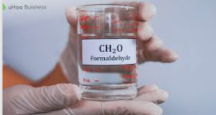Renovating your home brings a fresh look and feel but can also release harmful chemicals into the air, particularly volatile organic compounds (VOCs) like formaldehyde. These chemicals, often found in common building materials, can linger in your indoor space and cause health issues ranging from mild irritation to long-term risks like cancer. This blog explores how renovations expose homeowners to VOCs and offers practical tips to minimize exposure while creating a healthier home environment.
What Are VOCs and Formaldehyde?
VOCs are chemicals that easily become gases or vapors at room temperature. They are found in numerous household products, including paints, adhesives, cleaning supplies, and furniture. One particularly concerning VOC is formaldehyde, a chemical that gives off the distinct “new house smell” often associated with freshly renovated homes.
Formaldehyde is commonly used in resins, glues, and other adhesives found in building products such as plywood, particleboard, and medium-density fiberboard (MDF). This VOC can cause symptoms like eye, nose, and throat irritation and may lead to long-term health effects, including certain cancers.

Common Building Products Containing VOCs
During a house renovation, many of the materials and products used contain VOCs. Here are some of the most common offenders:
- Paints and Varnishes
Traditional oil-based paints and varnishes contain high levels of VOCs. Even some water-based paints, while lower in VOCs, can still release these chemicals into your living space. - Wood Finishes and Stains
Wood treatments, including stains, sealants, and varnishes, often contain formaldehyde and other VOCs that are emitted as the products cure and dry. - Adhesives and Glues
Adhesives used in flooring, wall tiles, and wood paneling can be significant sources of VOCs. Many adhesives and glues contain formaldehyde-based resins, particularly those used for plywood, MDF, and particleboard. - Flooring Materials
Vinyl flooring, laminate, and carpet adhesives can release VOCs over time. Vinyl flooring, in particular, may contain phthalates, another harmful class of VOCs. - Insulation Materials
Foam insulation, such as spray polyurethane foam (SPF), can emit VOCs as it cures. Some fiberglass insulation products are also treated with formaldehyde-based binders. - Composite Wood Products
Engineered wood products, including plywood, fiberboard, and particleboard, are notorious for releasing formaldehyde due to the adhesives used in their production. - Furniture and Cabinetry
New furniture, especially those made from composite wood or covered with synthetic finishes, can emit VOCs. Pressed-wood products, used for shelves, cabinets, and drawers, are often made with formaldehyde-based adhesives.

Health Risks Associated with VOC Exposure
VOCs can affect your health in various ways, depending on the level of exposure. Short-term symptoms may include:
- Eye, nose, and throat irritation
- Headaches
- Dizziness
- Breathing difficulties
Long-term exposure to certain VOCs, such as formaldehyde, has been linked to more severe health problems, including:
- Respiratory diseases
- Asthma
- Cancer
For these reasons, it’s crucial to take steps to minimize exposure, especially during renovations.
How Renovations Increase VOC Exposure
Renovation activities, such as painting walls, installing new flooring, or furnishing new cabinetry, often involve products that release VOCs. The concentration of VOCs can rise dramatically in indoor spaces, particularly in rooms without good ventilation. Formaldehyde, for example, can continue to off-gas for months or even years after installation.
According to the recent article from The Straits Times, air purifiers may not be the magic solution to removing VOCs like formaldehyde. The National Environment Agency (NEA) advises that while air purifiers can remove some pollutants, there is limited data on their effectiveness in household environments. The most effective way to manage VOCs is to reduce the source of these chemicals.
Active Actions for Homeowners to Avoid High VOC Products
To minimize your exposure to VOCs and formaldehyde during renovations, here are some proactive steps you can take:
1. Choose Low-VOC and No-VOC Products
When selecting paints, finishes, or adhesives, opt for low-VOC or no-VOC products. Many manufacturers now produce eco-friendly versions of their products that emit significantly fewer harmful chemicals. Look for products certified by organizations like:
- Green Seal
- Singapore Green Labelling Scheme
2. Prioritize Solid Wood Over Composite Wood
Instead of using plywood, MDF, or particleboard, opt for solid wood for your furniture, cabinetry, and flooring. Solid wood does not contain the formaldehyde-based adhesives found in composite wood products.
3. Use Water-Based Paints and Finishes
Water-based paints, varnishes, and wood finishes tend to have lower VOC levels compared to oil-based products. Check for products labeled “low VOC” or “VOC-free” to ensure you’re making a healthier choice for your home.
4. Ventilate During and After Renovation
Proper ventilation is key to reducing indoor VOC concentrations. During renovations, open windows, use exhaust fans, and consider investing in a mechanical ventilation system to improve airflow. Continue ventilating the space even after the renovation is complete to help reduce long-term VOC exposure.

5. Consider VOC-Reducing Air Purifiers
While air purifiers are not a guaranteed solution for removing all VOCs, they can help reduce some levels, especially when equipped with activated carbon filters. Be sure to choose models that specifically mention VOC filtration and use them in conjunction with proper ventilation.
6. Allow Materials to Off-Gas Before Installation
If possible, allow building materials like flooring and cabinets to off-gas in a well-ventilated area before installing them in your home. This will help release some of the VOCs before they are brought into your indoor space.
7. Invest in Non-Toxic Furniture
When purchasing furniture, look for items labeled formaldehyde-free or made with natural materials. Many eco-friendly furniture brands use organic fabrics and solid wood, which are less likely to emit VOCs compared to conventional options.
8. Test Indoor Air Quality
If you’re concerned about VOC levels, consider using a VOC sensor or hiring a professional to test the indoor air quality. This will help identify any high VOC concentrations and guide you on necessary steps to reduce them.
Conclusion
Renovating your home shouldn’t come at the cost of your health. While VOCs like formaldehyde are present in many building materials, homeowners can take steps to minimize their exposure. By choosing low-VOC products, improving ventilation, and being mindful of the materials you bring into your home, you can create a safer and healthier living environment.
Need help for your renovation ? Contact 9reno
We will help homeowner to choose the material with little or non VOC building products, advise what is the best alternative building material.
Further reading :
- Transform Your Existing Wall Tiles with Epoxy Painting – No Hacking, No Overlay Required!
- Scammed for $25,000: How Renovation Contractors Can Safeguard Against Bulk Order Fraud


Leave a Reply